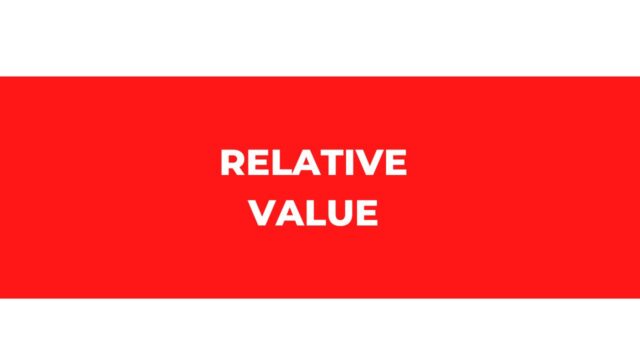
What is relative value and how is it different from absolute value
Relative value is a term that is used in many different fields, including investing, economics, and math. Put simply, it is the value of one thing in relation to another. For example, if you were to compare the relative value of two stocks, you would look at how much each stock is worth in relation to the other. In other words, you would be looking at the price of each stock in relation to the other. This is different from absolute value, which is simply the actual value of something without any reference to anything else. So, if you were looking at the absolute value of a stock, you would just be looking at its actual price.
However, if you were looking at the relative value of a stock, you would be looking at its price in relation to another stock. This distinction is important because it helps us to understand how value is determined. When we are looking at relative value, we are essentially comparing two things and seeing which one is more valuable. On the other hand, when we are looking at absolute value, we are just looking at the actual value of something without any reference point. Relative value is important because it allows us to see how two things compare to each other. It is a way of putting
How to calculate relative value
There are a variety of ways to calculate relative value, but the most common method is to divide the price of the security by a relevant benchmark. For example, if a stock is trading at $100 and the benchmark index is at 1,000, the relative value of the stock is 0.1. This means that the stock is trading at 10% of the benchmark index. Relative value can be useful for identifying opportunities in the market, as it can help to compare different securities and find those that are trading at a discount. However, it is important to remember that relative value is just one factor to consider when making investment decisions, and it should not be used in isolation.
The benefits of using relative value
Many people use absolute value when they want to find out how much something is worth. However, relative value can also be a useful way of assessing the worth of something. Relative value takes into account not only the intrinsic value of an object, but also its location, condition, and other factors. This makes it ideal for assessing the value of vintage or antique items, which can be difficult to price using absolute value alone. In addition, relative value can be helpful when trying to decide whether to buy or sell an item. By considering the relative value of an object, you can get a better idea of its true worth. As a result, using relative value can be a useful way to make sure you are getting the best possible deal on anything you buy or sell.
The limitations of relative value
Relative value is a concept that is often used to compare things, but it can be limited in its usefulness. For example, when comparing two different products, it is only possible to say that one is more expensive than the other if their prices are known. If only one price is known, then it is not possible to make a comparison. Relative value can also be affected by personal preferences. For instance, someone may prefer a cheaper product because it is more affordable, even if a more expensive product is of better quality. In conclusion, relative value can be a helpful way to compare things, but it is important to keep in mind its limitations.
Comparison of absolute and relative value
There are pros and cons to both approaches. Absolute value strategies tend to be more successful in markets that are inefficient, where there are more opportunities to find mispriced assets. However, these strategies can also lead to large losses if the market corrects and prices revert to their fair value. Relative value strategies tend to perform better in efficient markets, where it is harder to find mispriced assets. However, these strategies can also miss out on big gains if an asset class goes through a structural change (such as a technology disruption).
In the end, there is no right or wrong answer when it comes to choosing between absolute and relative value investing. It all depends on the individual investor’s preferences and objectives.
The role of relative value in portfolio management
When it comes to portfolio management, relative value is an important consideration. Relative value refers to the relationship between the prices of two assets. For example, if Asset A is trading at $100 and Asset B is trading at $50, then the relative value of Asset A is 2 (i.e., it is twice as expensive as Asset B). Relative value can be used to identify opportunities for arbitrage and to make decisions about which assets to buy or sell.
In general, assets with a higher relative value are considered to be more expensive, and assets with a lower relative value are considered to be cheaper. As such, relative value can be used as a tool for determining whether an asset is overpriced or underpriced. When analyzing the relative value of assets, it is important to consider both the absolute price level and the price history of the asset. By taking both of these factors into account, investors can make more informed decisions about how to allocate their portfolios.


































